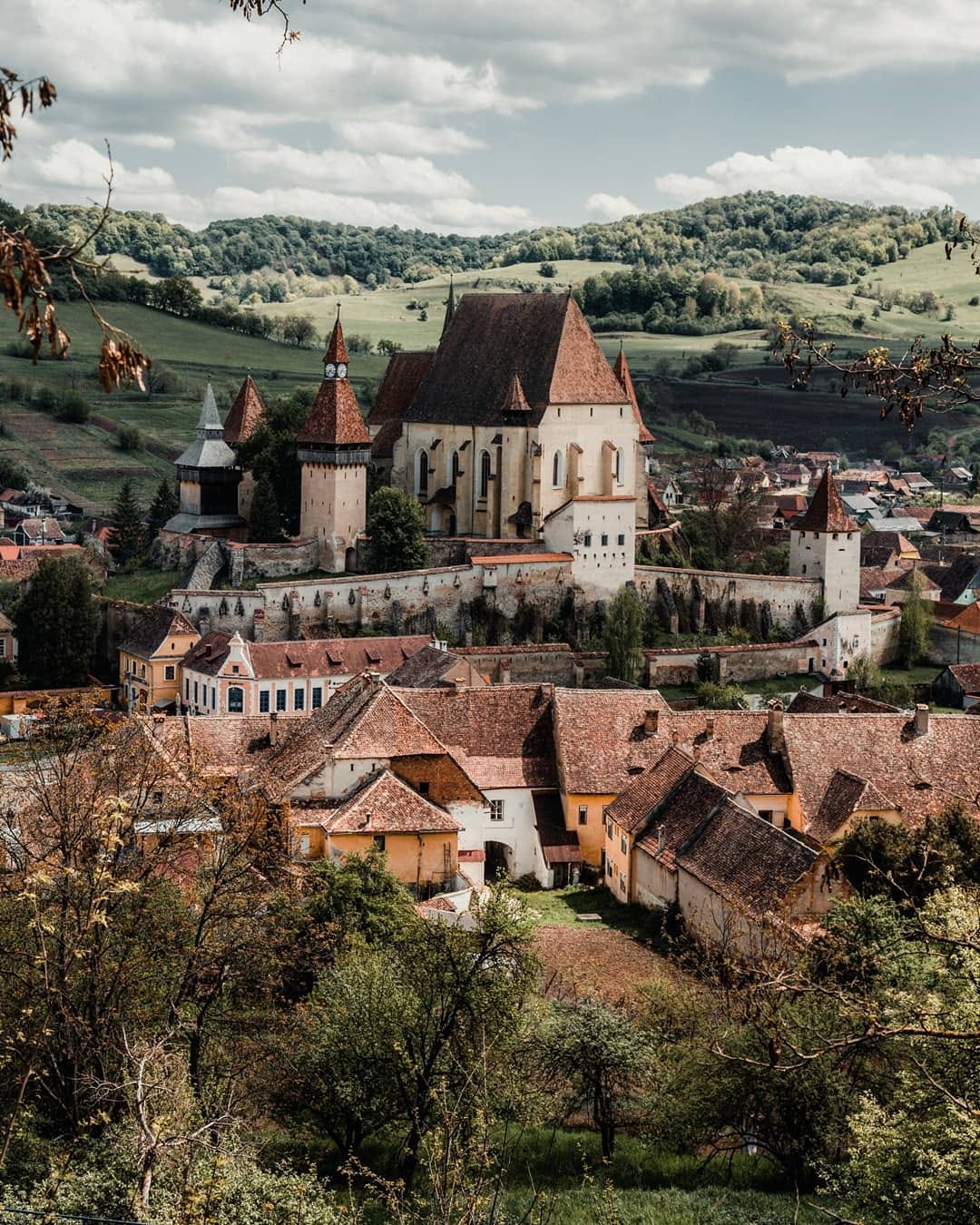The Human Scale
Defining the Human Scale as it relates to town and cities: Part I
The Horizontal Human Scale
Spend some time with urbanists and you are bound to hear the term human scaled sooner rather than later. A near relative to the term human scaled is when we talk about a town or neighborhood being walkable. What the term means is simply this: a human scaled town is one where you can live almost your entire life within walking distance. In a human scaled town work, rest, play, pray—essentially all everyday tasks—happen within a radius the average person will easily—and happily—be able to walk on foot. This radius is usually given as 10 or 15 minutes, depending on who you ask.
A town where you can walk to anywhere from anywhere within 15 minutes is usually about a third of a square kilometer in area size. With a few notable exceptions1, all towns and cities from the ancient world to sometime around modern times were limited to this size. Anything bigger and it was simply too impractical for a daily life without the use of vehicles.
However, the term human scaled is not exclusionary. You can have a human scaled town and still have access to cars, trucks and public transit. Sometimes relatively smoothly so, like in the case of central Tokyo (Japan), and sometimes relatively unhappily so, like in Damascus (Syria) or Amman (Jordan). Having the human scale is important but it does not guarantee a good place to live.

The Vertical Human Scale
The human scale applies to the vertical as well as the horizontal. In order to aspire to be human scaled a building should not have more floors than the number of stairs an average person will be happy to climb day out and day in as part of daily life. In practice, this usually puts a vertical limit to the human scaled town in a normal building at about five floors, give or take. This also happens to be the sweet spot for a large modern city in almost all parameters you can think of, not least being population density versus environmental cost2.
Once again, the human scale is not exclusionary. You can have a human scaled town with just two story buildings and still achieve higher population density levels than modern London or modern Singapore. Also, the five floor limit says nothing about the height of a building. For example, St. Paul’s Cathedral in London is a single story building: everything the common person needs in it is accessible on the ground floor, even though the building itself is one hundred and eleven meters tall. On the other extreme, the Eiffel Tower has essentially four floors, but few would be happy to walk up and down them every day (the top floor is over three hundred meters above the ground).
However, today our towns and cities are more or less all guilty of over-reaching the human scale.

Trains, Elevators, Cars: The Human Town Over-Reaching Itself
The three technologies that more than anything enabled the human scaled town to over-reach itself, were trains, elevators, and cars. The railway made it possible to quickly move large numbers of people into central districts. It made land there so valuable that when elevators were invented at roughly the same time as commuting, you had a case for building low-efficiency, expensive and complicated office buildings much taller than the older, human scaled five-story limit. The horizontal cul-de-sac was born3. With cars, the suburbs became accessible for everyone. No longer was it necessary to at least build within walking distance of train or tram stations: now we could build anywhere. And we did.

Over-reach: The Un-Human Scaled Town
By adding subways, tram lines, streets and parking for bikes or cars, and escalators, elevators and even ropeways to overcome horizontality, modern cities have done their best to over-reach the human scale. This creates—among other problems (actually too numerous to even really begin to explore in this short text)—a curious situation where it is possible to live so far from anywhere in your town that you become absolutely dependent on transport (private or public), or so far above the ground level, that you need elevators in order to access your home.4
This dependency on complex systems of vehicles and energy to move elevators, creates some hugely wasteful, extremely inaccessible and dangerously fragile towns and cities.
Your city of millions is just a power cut from having office buildings that are inaccessible and just a gasoline or power shortage from having entire populations stranded in suburbia with no realistic way out or in. And when we give up on the human scale we also lose the best possible way to stay healthy: we lose the ability to rely on our own feet. Add to this vehicle based pollution, and we end up sick and overweight, with a destroyed local and global environment, and poor mental health.
Having families also becomes far more expensive and far more complicated, with children unable to drive being forced to rely on parents turned private chauffeurs. For many working adults, commuting results in the loss of lives and productive time, it leads to increased divorces and smothers potential relationships that never had a chance to bloom. Shopping has to be planned in advance and space at home has to be made to keep food and drinks, usually in gigantic power hungry refrigerators and freezers. Food wastage increases the further we live from our grocery store or supermarket.
A city where you need a car to get around becomes a complete no-go zone for the large groups of people who can’t drive (the young and the elderly), or the ones that can’t afford transport of some kind, or are unable to drive due to illness or handicap. These people are dependent on the good will of their families or public welfare benefits paid for by the public.
All in all, the un-human scaled town or city is a massive squander of life, happiness, energy, and money.

The Human Scale is Good for Humans, The Economy, and the Environment
By building to the human scale we create places where it is good to be a human. We can walk where we need to. We don’t need to chauffeur our children around their schools and activities. The streets belong to the people who live on them, which creates less crime, less insecurity. It makes it easier to be a child, and even more important, easier to be a parent. In 2019 the average American, for example, spent $773.5 on cars and fuel, per month. Imagine the lifetime savings if you did not need a car for your daily life. In 2019 in the UK alone—a fairly safe country to be driving in—1,752 people were killed and 153,158 injured, on the roads. Imagine how many times smaller this number could be if you took away the need to drive to school, to work, to the supermarket, to church, to the sports field, etc.

The More the Merrier
Most modern towns and cities devote somewhere between 25-60% to parking lots and access roads to these parking lots. Mandatory parking and even more so, mandatory driving and mandatory commuting, makes every new building or home built a new headache for the people who already live there. In a human scaled town, a two story apartment building getting three more floors means more neighbors, more life in the street, new faces in the local taverna, more customers in your barber shop, more potential team mates for your kid’s soccer team. It could also mean more tax income to fund your local library, more people to join your Veteran’s Association or Bird Watching Club or Volunteer Ambulance Crews. And on the other side…
In an un-human scaled town, a new apartment buildings means swathes of new parking, worse air, more toxic run-off, worse floods, worse summer heat, more use of air conditioning, more cars on the streets, more crashes, more congestion, more driving to get anywhere, less places to play, less places where you can let your children roam un-supervised, less places where you can escape to nature. And what is worst: the people who live there will mostly only return home to sleep. They do their shopping somewhere else, they work somewhere else, they go to church somewhere else, they might even pay their taxes somewhere else. They are not and never will be, part of your community.
Who in their right mind wants to see new buildings go up in a town where cars rule, and streets and buses are full as it is?

Defining the Human Scale as it relates to town and cities: Part II
In the next part of this text I will talk about other ways to use the human scaled metric when applying it to towns and how the human scaled town or city handles growth and expansion, answering that perennial bugbear of a question: “you have a nice idea for a town there, but does it scale?”.
Thank you for taking the time to read this Substack post which turned out a little longer than I expected even after I decided to divide it into a Part I and a Part II.
All the photos used in this post were taken by the Montenegrin photographer Rale P. and used with his kind permission. Rale is one of the best photographers of European urbanism that I know of. You can follow him on Instagram here: https://www.instagram.com/rale_p/
If you need a city photographer who knows the score, pick Rale.
Rome, etc.
One of the most common misconceptions is that it is somehow more efficient to build very tall buildings, and that it is cheaper too, when you consider the cost of land. However, you only need to show a few photographs of American cities from the air to disabuse a person of average intellect of this delusion: typically they will see a small core with tall buildings surrounded by an endless sprawl of very low height low density buildings and parking lots. Compare with central Paris: a dense, large city averaging four floors, but with the iconic Haussmann buildings at 5-7 floors, copied in cities all over the world.
If you were to flatten-out Manhattan you would find that all the buildings would be around four floors tall. What makes it economically feasible to build tall in tiny central business districts is zoning laws and codes that make it impossible to build denser anywhere near them. Call it the “funnel mode” (the funnel being a great way to think of most large scale human practices: a wide low brim and a tiny very narrow center) of land development (land speculation has always been the original “get rich” scheme. Even the ancient Romans complained about this).
There is an interesting anecdote about reliance on elevators that I would like to share. No need to go into details, but let’s just say there was a town in north-eastern Japan that had placed their well equipped disaster response center on the top of the city hall building. Meeting rooms, computers, communication equipment, map centers, food, water, back up power etc. All was there in perfect order. The only problem was that when the earthquake and tsunami struck on March 11th, 2011, the building’s elevators lost power and could not be used. A disaster response center on the 12th floor without elevators quickly becomes useless.
A similar thing happened in Tokyo during the great typhoon of 2019. Several recently built 24-floor apartment towers with over a hundred apartments each, had their basements and the building water machinery, flooded. Even though the elevators survived and kept moving, there was no water in the towers and so the flood damaged towers were all rendered useless for several weeks until repairs could be made and spare parts brought in from distant factories.


